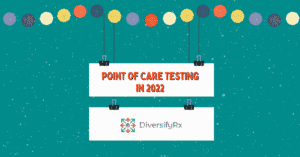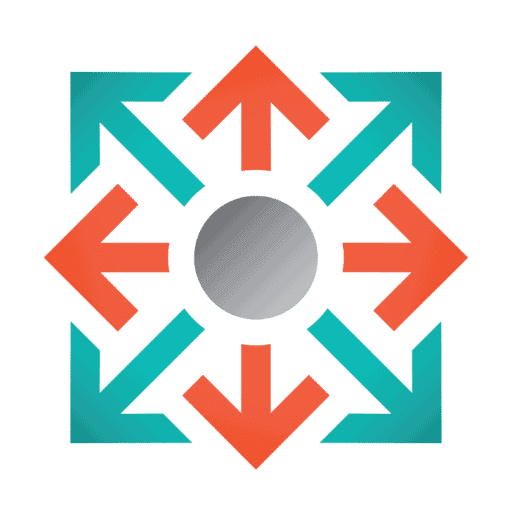Not all medications are created equal. Are you handling your hazardous drug properly?
Hazardous drugs constitute a distinct category of pharmaceuticals that demand special attention from all types of pharmacies, not just compounding.
Adhering to regulations related to hazardous drugs in pharmacies is of vital importance. Compliance for hazardous drugs will look wildly different based on the services, equipment, and types of medication you handle. A one-size-fits-all solution does not exist.
Let’s dive into some of the aspects of the safe handling of these dangerous items.
Understanding Hazardous Drugs
Hazardous drugs, often referred to as dangerous pharmaceuticals or unsafe chemicals, encompass a group of medications with the potential to cause harm due to their specific chemical properties, toxicity levels, or the risks of exposure associated with them.
These drugs are typically used for the treatment of serious conditions, such as cancer, but they can also include medications for other illnesses. Hazardous drugs can pose risks through various routes of exposure, including inhalation, skin contact, and ingestion.
Importance of Compliance
Compliance with regulations pertaining to hazardous drugs is not merely a matter of legal obligation; it is an ethical and safety imperative.
How to Ensure Regulatory Compliance
1. Protecting Pharmacy Staff: Compliance measures are essential to minimize the exposure risk of your pharmacy employees who handle hazardous drugs, safeguarding their health and well-being. Prioritizing staff safety through compliance not only reduces their health risks but also fosters a safer and more supportive work environment.
2. Safeguarding Patient Health: Proper adherence to hazardous drug handling procedures helps to prevent medication errors and contamination, ultimately ensuring the safety and well-being of your patients.
3. Meeting Legal Obligations: Regulatory agencies like OSHA and USP have established comprehensive guidelines for the safe handling of hazardous drugs, and non-compliance can result in serious legal consequences, including massive fines and sanctions.
Safety Protocols for Handling Hazardous Drugs
To guarantee regulatory compliance and protect the safety of staff and patients, your pharmacy should establish robust safety protocols for handling hazardous drugs.
Here are the key safety measures to consider:
1. Engineering Controls: The implementation of engineering controls like biological safety cabinets and fume hoods is crucial to confine hazardous drug particles and vapors, preventing their release into the surrounding environment and safeguarding your pharmacy staff. These specialized devices create a controlled workspace, minimizing exposure risks and ensuring the safe handling and preparation of hazardous drugs.
2. Personal Protective Equipment (PPE): Providing your pharmacy staff with appropriate PPE, along with comprehensive training on its correct usage, is essential. This measure ensures that employees have the necessary protective gear, such as gloves, gowns, masks, and eye protection, to minimize direct contact with hazardous drugs. Encouraging strict adherence to safety measures and proper PPE usage helps protect your staff members from potential exposure risks and promotes a safer working environment.
3. Ventilation Systems: Maintaining pharmacy ventilation systems that minimize the dispersion of hazardous drug particles and fumes ensures a safe working environment. Regular maintenance of these systems will uphold their effectiveness in controlling air quality and reducing the risk of exposure.
4. Segregation and Storage: Storing hazardous drugs separately from other medications, coupled with proper labeling and restricted access, prevents cross-contamination and ensures that only trained personnel have access to these substances. Segregation and storage measures maintain the integrity of both hazardous drugs and your pharmacy’s overall drug inventory.
5. Training and Education: Comprehensive training programs that educate your pharmacy staff on safe hazardous drug handling practices are key. These programs cover proper procedures, correct PPE usage, spill response protocols, and waste disposal guidelines. Investing in training and education creates a culture of safety, empowers staff with the knowledge to protect themselves, and minimizes the risk of accidents or exposure incidents.
6. Waste Management: Establish clear procedures for the safe disposal of hazardous drug waste. Use designated containers and comply with regulations governing waste transport and disposal. Proper waste management not only protects the environment but also ensures the safe handling and disposal of hazardous drug byproducts, reducing potential risks to your pharmacy staff and the community.
How to Comply with USP Chapter <800>
USP Chapter <800> offers comprehensive guidelines for the handling of hazardous drugs in healthcare settings, including pharmacies. Compliance with these standards ensures safety and meets regulatory requirements. Key elements of USP <800> include:
- Hazardous drug risk assessment
- Facility design and engineering controls
- Personnel training and competency assessment
- Standard operating procedures (SOPs) for handling hazardous drugs
- Environmental monitoring and quality assurance programs
The Role of Employee Training
Employee training is a cornerstone of hazardous drug safety and compliance. Well-trained staff are better equipped to handle dangerous drugs safely and minimize the risk of exposure. Your training programs should cover the following areas:
1. Hazard Identification: Ensure that your pharmacy staff can identify hazardous drugs and that they comprehend the associated risks. This knowledge enables them to exercise caution when handling these substances. By consistently identifying and understanding the potential dangers of hazardous drugs, your pharmacy staff can minimize the risk of exposure incidents and maintain a safer working environment.
2. Safe Handling Procedures: Providing comprehensive guidance on the safe handling of hazardous drugs, including protocols for preparation, administration, and disposal, equips pharmacy staff with the necessary knowledge and skills to protect themselves and prevent contamination. Training around safe handling procedures creates a culture of compliance, promotes patient safety, and reduces the potential for medication errors or accidents involving hazardous drugs.
3. Use of Personal Protective Equipment: Your staff training should include thorough instruction on the proper usage of PPE, including when and how to correctly don and doff protective gear to minimize exposure risks. Proficiency in using PPE ensures that your pharmacy staff has a crucial line of defense against contact with hazardous drugs, contributing to their safety and well-being.
4. Spill Response: Equip your staff with clear and actionable spill response protocols to best prepare them for handling accidents involving hazardous drugs. These protocols should include containment and cleanup measures. Effective spill response training helps minimize the spread of dangerous drug contamination, protecting both your staff and your pharmacy environment.
5. Waste Management: Train your pharmacy staff on proper disposal procedures for hazardous drug waste, including labeling, storage, and adherence to regulatory requirements to ensure the safe management of these substances. Compliance with waste management protocols not only safeguards your staff but also mitigates environmental and public health risks associated with hazardous drug waste.
6. Record-Keeping: Accurate record-keeping regarding the handling of hazardous drugs and incidents is a focus of regulatory compliance. Proper documentation helps demonstrate adherence to safety measures and regulatory standards. Maintain comprehensive records to aid in incident investigation, support continuous improvement in safety practices, and ensure accountability within your pharmacy.
These requirements can seem daunting. For most regular retail pharmacies, you can implement the necessary changes in your pharmacy in a day. For compounding pharmacies, the burden is definitely higher as the risk is greater. You don’t have to figure it out all on your own. Some companies have created easy-to-follow checklists to help you get and stay compliant. One we recommend is RJ Hedges.
Running a pharmacy can be tough. DiversifyRx is here to help make it profitable, fun, and as easy as possible. Never hesitate to reach out with any questions.
















